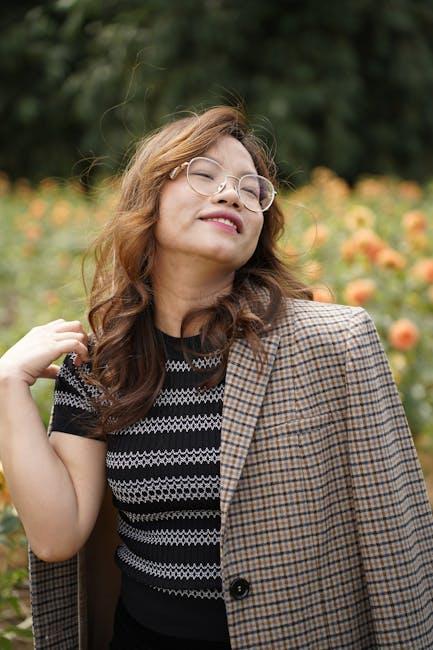In the ever-evolving landscape of modern cinema, the art of filmmaking remains a dynamic tapestry woven with innovation and tradition. At its core lies a treasure trove of techniques honed by veteran directors who have not only shaped the medium but also redefined storytelling for new generations. From the subtle dance of light and shadow to the nuanced choreography of camera movement, these cinematic maestros employ a rich palette of skills that continue to captivate audiences worldwide. Join us as we delve into the best filmmaking techniques from these seasoned visionaries, exploring how their timeless artistry enriches the films of today and inspires the storytellers of tomorrow.
Mastering the Craft: Timeless Techniques from the Masters
In the ever-evolving world of cinema, some techniques remain as powerful today as they were when first introduced by legendary directors. These timeless methods have shaped the language of film, offering directors a toolbox of skills to convey their vision. Among these are the long take, famously utilized by directors like Martin Scorsese and Alfonso Cuarón, creating immersive experiences that pull audiences deeper into the narrative. The Kuleshov Effect, introduced by Soviet filmmaker Lev Kuleshov, continues to influence modern editing by demonstrating how juxtaposition of images can evoke emotional responses and imply complex meanings.
- Lighting Techniques: The use of chiaroscuro by Orson Welles in “Citizen Kane” highlights the dramatic interplay between light and shadow, a technique still emulated to create mood and depth.
- Montage Sequences: Pioneered by Sergei Eisenstein, montage remains a vital storytelling device, allowing filmmakers like Quentin Tarantino to craft dynamic sequences that convey energy and emotion.
- Breaking the Fourth Wall: Directors such as Woody Allen have mastered this technique, engaging audiences directly and creating a unique narrative intimacy.
These techniques, refined and adapted by modern directors, continue to enrich cinematic storytelling, proving that the lessons from the masters are as relevant now as ever.

Visual Storytelling: Harnessing the Power of Cinematic Language
In the realm of modern cinema, veteran directors have mastered the art of visual storytelling, using cinematic language to craft immersive narratives. Cinematic language refers to the techniques and tools directors employ to convey stories visually, enhancing the emotional and thematic depth of a film. This powerful form of storytelling can transform a simple scene into a profound experience, engaging audiences on multiple levels.
- Composition and Framing: Directors like Wes Anderson are known for their meticulous use of symmetry and vibrant color palettes, creating visually striking frames that are instantly recognizable.
- Lighting and Shadow: The use of chiaroscuro, as seen in the works of Ridley Scott, adds a dramatic flair, highlighting contrasts between light and darkness to emphasize mood and tension.
- Camera Movement: Martin Scorsese’s dynamic camera movements, such as long tracking shots, immerse viewers in the action, offering a seamless and engaging narrative flow.
- Symbolic Imagery: Directors like Christopher Nolan often weave symbolic elements into their visuals, allowing audiences to uncover deeper meanings with each viewing.
By harnessing these techniques, directors not only tell a story but also invite viewers to explore the layers beneath the surface, turning each film into a rich tapestry of visual and emotional experiences.

Directorial Vision: Crafting Unique Perspectives in Film
In the realm of modern cinema, veteran directors continuously push the boundaries of storytelling by infusing their films with distinct visual and narrative styles. These seasoned filmmakers often employ a combination of techniques that are as unique as their visions, creating a tapestry of cinematic artistry. A director’s ability to craft a unique perspective is often rooted in their choice of techniques such as:
- Visual Storytelling: Directors like Wes Anderson utilize meticulous symmetry and vibrant color palettes to create visually striking worlds that convey emotion and meaning without words.
- Long Takes: Alfonso Cuarón and Alejandro González Iñárritu are known for their seamless long takes that immerse the audience in the narrative, enhancing the realism and emotional depth of their films.
- Non-linear Narratives: Christopher Nolan’s complex, non-linear storytelling challenges viewers to piece together the narrative puzzle, offering a more engaging and thought-provoking experience.
These techniques are not just stylistic choices; they are integral to how a director communicates their vision and connects with the audience. By employing such methods, veteran directors craft films that are not only visually stunning but also rich in narrative depth.

Emotional Resonance: Creating Authentic Connections with Audiences
In the realm of modern cinema, the power to evoke deep emotional responses lies at the heart of storytelling. Veteran directors excel in crafting scenes that linger in the audience’s mind long after the credits roll. Steven Spielberg, for example, often employs the technique of “show, don’t tell,” allowing viewers to feel the emotions through subtle visual cues and expressions rather than dialogue-heavy scenes. This approach creates a more immersive experience, drawing the audience into the characters’ inner worlds.
Another effective technique is the use of music and soundscapes to amplify emotional depth. Directors like Christopher Nolan meticulously design soundtracks that resonate with the narrative’s emotional undertones. Close-up shots also play a pivotal role in capturing the nuances of human emotion, a method frequently used by directors such as Greta Gerwig. These techniques not only enhance the emotional texture of a film but also forge authentic connections with audiences by tapping into universal feelings and experiences.
- Subtle Visual Cues – Emphasizing emotions through actions and expressions.
- Music and Soundscapes – Crafting soundtracks that mirror the film’s emotional journey.
- Close-up Shots – Highlighting the intricate details of human emotion.

